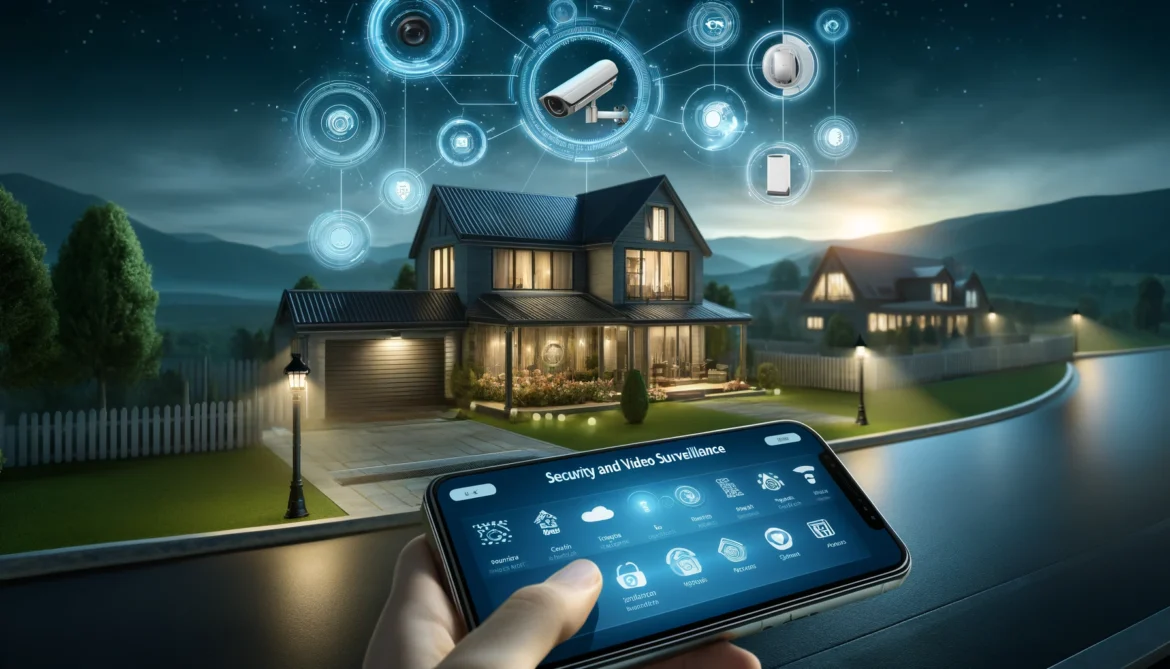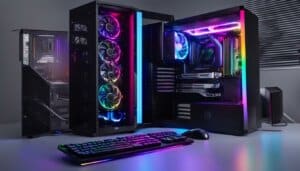Table of Contents
Since communication has become increasingly common, intelligent houses have swiftly established themselves as a part of society. Thanks to technological advancements, homeowners may remotely monitor and control many aspects of their home via smartphones or other internet-linked gadgets. Although smart home technology offers practical answers, it also brings serious security and video surveillance problems that must be adequately controlled for the best possible home ownership and safety. In addition to discussing these issues, this article looks at advantages and recommended practices for monitoring smart home security situations. If you are a student, check out tips for essay preparation on WordCountTool.
Understanding Home Security Technologies
In order to keep homes secure, discourage criminals, monitor any dangers, and discourage burglaries, smart home security systems integrate a variety of devices and technology. Smart locks, motion sensors, doorbell cameras, and indoor/outdoor security cameras are standard components of such a system. These components can be remotely controlled via smartphone apps or central hubs, offering advantages for convenience, accessibility, and safety, all within the same ecosystem.
Benefits of Video Surveillance in a Smart Home
Video surveillance is one of the cornerstones of smart home security systems. It enables homeowners to keep tabs on their property from any location in real-time and from any camera – indoors and outdoors – via surveillance footage from CCTVs installed inside and outside their homes. Visible surveillance cameras may discourage would-be intruders, reducing damage or crime. They can provide law enforcement agencies and insurers with footage of security breaches or suspicious behavior, aiding their investigation process and increasing chances of apprehending perpetrators or retrieving stolen items from being recovered by authorities or insurance companies. Writers can also check out more beneficial tools on SpeedyPaper.
Enhance Safety and Increase Awareness
Video monitoring in smart homes can significantly increase homeowners’ safety and awareness while deterring criminal activities. When homeowners are away, indoor cameras may be used to watch pets, elderly relatives, or young children – giving them comfort and peace of mind. Outside cameras may also help provide early warning of fires, floods, or severe weather, assisting homeowners to take swift and proactive steps to protect property and loved ones with round-the-clock monitoring notifications from video surveillance systems.
Privacy Considerations and Ethical Implications
Although video surveillance in smart homes provides many advantages, it’s essential to consider the privacy ramifications and moral dilemmas it raises. Privacy invasion and data security risks arise because surveillance cameras could capture sensitive personal information about family members’ activities, interactions, and behaviors within their homes. To safeguard their family’s and privacy effectively, homeowners need to be proactive. Proactive steps that you can take include changing camera settings to only record in public spaces and encrypting video feeds to protect them from unwanted access. In addition, all applicable laws and rules regarding surveillance camera usage must be strictly observed, including seeking people’s permission before filming in private areas.
Integrate into Smart Home Ecosystems
Integrating smart home security systems and other smart devices and ecosystems is one of the many advantages of modern smart home security systems. Homeowners may combine voice assistants, intelligent lights, alarm systems, and surveillance cameras to create an effective home security solution. Smart locks may be remotely operated to secure entrance points in case of security breach. At the same time, motion detectors connected to surveillance cameras can activate lights to notify homeowners about possible intruders. Hands-free control via voice assistants like Google Assistant and Amazon Alexa improves accessibility and convenience further for their homes.
Remote Monitoring and Accessibility Solutions
Smart home security systems’ ability to enable homeowners to remotely monitor and operate surveillance cameras from smartphones or other internet-connected devices is one of the system’s most attractive aspects. Homeowners may view live video feeds, receive real-time alerts, and change camera settings regardless of whether they’re at work, on vacation, or simply away from their house – providing unrivaled visibility and control of home security from virtually anywhere around the globe – increasing comfort and trust that their house is secure even when geographically apart.
Scalability and Customization Options
Smart home security systems offer homeowners scalability and customization possibilities that meet individual homeowners’ unique requirements and preferences. Whether in a sprawling estate or an intimate apartment, your security system can be tailored to your needs and budget. Begin by installing motion sensors and interior cameras before gradually expanding or expanding them as required – the flexible subscription plans and add-on options provided by many smart home security systems enable them to do this seamlessly.
Enhance Data Analysis and Insights
Artificial intelligence and machine learning technologies have revolutionized home security systems with advanced data analytics and insights capabilities. Real-time video footage analysis by surveillance cameras equipped with artificial intelligence algorithms may detect abnormalities such as suspicious activity or illegal access. By distinguishing routine operations from security breaches, intelligent solutions may lower false alarms while increasing warning accuracy; homeowners can improve safety while decreasing risks by gathering critical information about their home security status through data analytics to inform well-informed decisions.
Community and Neighborhood Security
Smart home security systems protect individual residences and promote neighborhood and community safety by encouraging cooperation and communication between neighbors. Neighborhood watch groups, community forums, and shared surveillance networks are some of the features available through many intelligent security systems that allow locals to collaborate in sharing any suspicious activities or security issues that may occur in their area. Communities may build stronger neighborhoods through collaboration utilizing technology; doing so may reduce crime while creating a sense of civic participation among residents.
Best Practices for Smart Home Security
Homeowners should utilize best practices when installing, configuring, and maintaining surveillance cameras and other security equipment to ensure its efficacy and integrity as part of a smart home security system. When starting with this endeavor, first carefully evaluate your home security needs and weaknesses, taking into account factors like size, layout, and possible ports of access for intruders. To increase coverage and visibility, invest in high-quality security cameras with motion detection, night vision recording, or high-definition video recording capability and strategically position them to cover essential sections while reducing blind spots and false alerts.
Firmware and software for security devices should be regularly updated to address bugs and ensure peak performance to minimize bugs. Strong passwords and encryption techniques should also be employed to prevent illegal access to feeds and prevent hackers or tampering attempts from taking place. Finally, review recorded footage regularly to spot suspicious activities or breaches; take any necessary actions – alerting police enforcement or altering security settings as required. Regularly reviewing and updating security protocols is crucial in maintaining a secure environment. Implementing multi-factor authentication can also add an extra layer of protection against unauthorized access to security systems.
Conclusion
Security and video surveillance are integral parts of a smart home environment that provide homeowners with knowledge, safety, and peace of mind. Homeowners may take advantage of smart home automation features while increasing security and privacy by taking advantage of new technological developments and following best practices for installation and upkeep. However, it is essential to remain mindful of privacy issues associated with continuous surveillance; being vigilant means creating a safer living space for themselves and their children in this digital era through careful planning. Also, if you are a student, check out another article about pros and cons of working while in college: https://www.businessworld.ie/news/Pros-and-Cons-of-Working-While-in-College-575861.html









